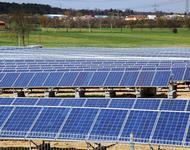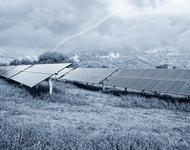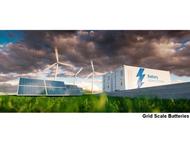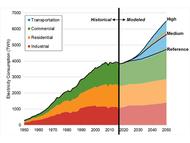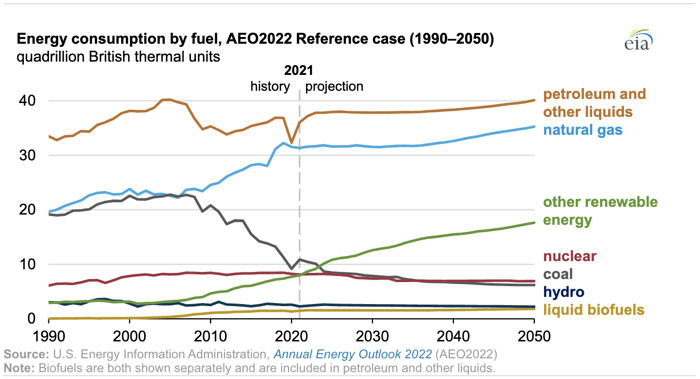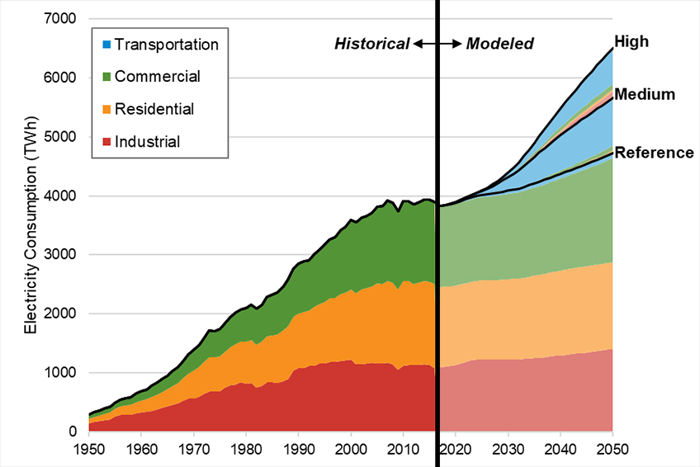Climate Change
Two days before Halloween, 2011, New England was struck by a freak winter storm. Heavy snow descended onto trees covered with leaves. Overloaded branches fell on power lines. Blue flashes of light in the sky indicated exploding transformers. Electricity was out for days in some areas and for weeks in others. Damage to property and disruption of lives was widespread.
That disastrous restriction on human energy supplies was produced by Nature. However, current and future energy curtailments are being forced on the populace by Federal policies in the name of dangerous “climate change/global warming”. Yet, despite the contradictions between what people are being told and what people have seen and can see about the weather and about the climate, they continue to be effectively steered away from the knowledge of such contradictions to focus on the claimed disaster effects of “climate change/global warming” (AGW, “Anthropogenic Global Warming”).
People are seldom told HOW MUCH is the increase of temperatures or that there has been no increase in globally averaged temperature for over 18 years. They are seldom told how miniscule is that increase compared to swings in daily temperatures. They are seldom told about the dangerous effects of government policies on their supply of “base load” energy — the uninterrupted energy that citizens depend on 24/7 — or about the consequences of forced curtailment of industry-wide energy production with its hindrance of production of their and their family’s food, shelter, and clothing. People are, in essence, kept mostly ignorant about the OTHER SIDE of the AGW debate.
Major scientific organizations — once devoted to the consistent pursuit of understanding the natural world — have compromised their integrity and diverted membership dues in support of some administrators’ AGW agenda. Schools throughout the United States continue to engage in relentless AGW indoctrination of students, from kindergarten through university. Governments worldwide have been appropriating vast sums for “scientific” research, attempting to convince the populace that the use of fossil fuels must be severely curtailed to “save the planet.” Prominent businesses — in league with various politicians who pour ever more citizen earnings into schemes such as ethanol in gasoline, solar panels, and wind turbines — continue to tilt against imaginary threats of AGW. And even religious leaders and organizations have joined in to proclaim such threats. As a consequence, AGW propaganda is proving to be an extraordinary vehicle for the exponential expansion of government power over the lives of its citizens.
Reasoning is hindered by minds frequently in a state of alarm. The object of this website is an attempt to promote a reasoned approach; to let people know of issues pertaining to the other side of the AGW issue and the ways in which it conflicts with the widespread side of AGW alarm (AGWA, for short). In that way it is hoped that all members of society can make informed decisions.
Climate Change News
Climate Information - ORIGINAL CONTENT
- 8/2/22 at 07:00 AM
Code Red For Sanity – The Credibility Crisis At The IPCC - Highlighted Article
- 7/28/22 at 07:00 AM
Intermediate Replacement - ORIGINAL CONTENT
- 7/26/22 at 07:00 AM
Activists Are Pushing Climate Hysteria - Highlighted Video
- 7/21/22 at 07:00 AM
Baseload Replacement - ORIGINAL CONTENT
- 7/19/22 at 07:00 AM
Wind and Solar Subsidies - Highlighted Video
- 7/14/22 at 07:00 AM
Climate Change Playbook - ORIGINAL CONTENT
- 7/12/22 at 07:00 AM
Prof. Roger Pielke Jr. "The Inconvenient Truth about Climate Science" - Highlighted Video
- 7/7/22 at 07:00 AM
Full Disclosure - System - ORIGINAL CONTENT
- 7/5/22 at 07:00 AM
(in)Dependence Day 2022 - ORIGINAL CONTENT
- 7/1/22 at 07:00 AM
Full Disclosure - Storage - ORIGINAL CONTENT
- 6/28/22 at 07:00 AM
The Cost of Net Zero Electrification of the U.S.A. - Highlighted Article
- 6/23/22 at 07:00 AM
Full Disclosure - Solar - ORIGINAL CONTENT
- 6/21/22 at 07:00 AM
How Much Energy Will the World Need? - Highlighted Video
- 6/16/22 at 07:00 AM
Full Disclosure - Wind - ORIGINAL CONTENT
- 6/14/22 at 07:00 AM
-
Headlines
Search Headlines-
Climate Waste, Fraud, and Abuse: Electric School Bus Company Goes Kaput, Forcing Schools to Go Back to Diesel
- Energy Security and Freedom - Substack
- August 29, 2025
-
Wrong, CBS and Other Media Outlets, Abrupt Antarctic “Climate Shifts” Are Not New or Necessarily Catastrophic
- Climate Realism
- August 29, 2025
-
NZW Samizdat: Britain faces a cost-of-Miliband crisis
- Net Zero Watch
- August 29, 2025
-
New York Continues to Ignore Public Input and Plows Ahead with False Solutions That Will Takes Years to Fix
- Energy Security and Freedom - Substack
- August 28, 2025
-
Sorry, New York Times, No Evidence Shows Hurricane Erin was Driven by Climate Change
- Climate Realism
- August 28, 2025
-
EXCLUSIVE: Trump Withdraws $716M Biden-Era Loan for New Jersey Green Energy Project, Dealing Latest Blow to Wind Industry
- The Washington Free Beacon
- August 28, 2025
-
Prominent Physicists Lindzen & Happer to National Academies of Sciences: ‘The CO2 Endangerment Finding is not based on science’ – ‘Carbon dioxide & other greenhouse gases & fossil fuel use will have a trivial effect on temperature’
- Climate Depot
- August 28, 2025
-
Climate Inquisition Silenced a Generation of Dissenting Scientists: Goal was to ‘produce data supporting a political agenda’ & ‘Peer review…changed to a weapon for enforcing ideological conformity’
- Climate Depot
- August 28, 2025
-
Pressure Heats Up on the Climate Lawfare’s Favorite Group
- Energy in Depth
- August 28, 2025
-
Cross-Regional Analysis of Renewable and Dispatchable Energy Sources
- American Thinker
- August 27, 2025
-
23 attorneys general call on EPA's Lee Zeldin to defund radical climate science institute
- Blaze Media
- August 26, 2025
-
American Industry Needs Low-Cost Energy and an Expanded Power Grid
- Real Clear Energy
- August 25, 2025
-
-
Scholars Wanted
 The Right Insight is looking for writers who are qualified in our content areas.
The Right Insight is looking for writers who are qualified in our content areas.




